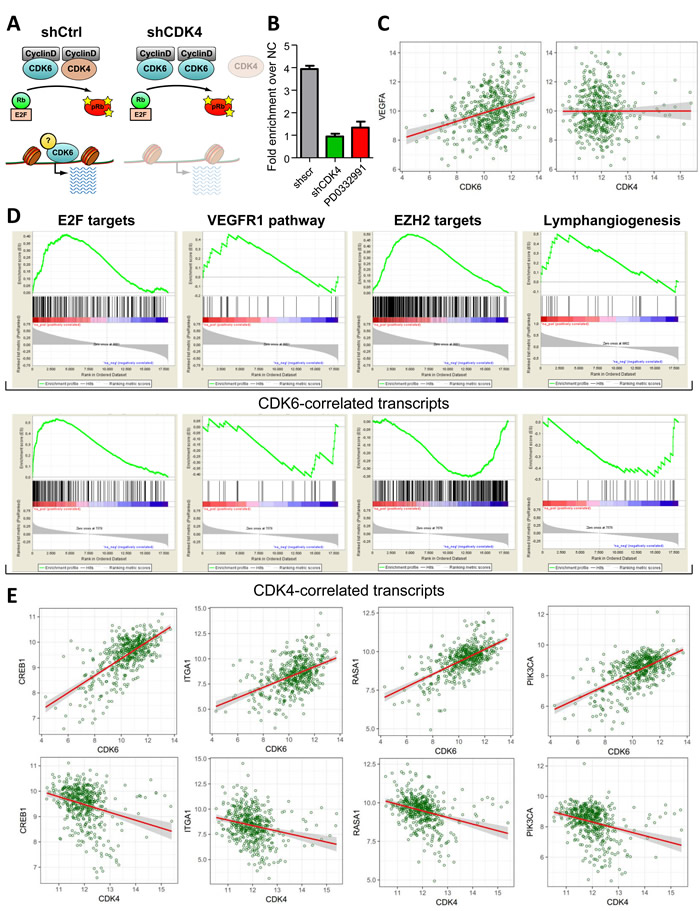Sh RNA knockdown of either CDK4 or CDK6 significantly reduces cell proliferation and impedes their migratory capacity in vitro, which translates into a strong inhibition of tumor growth in xenotransplantation experiments.
CDK6 knockdown in melanoma cell lines impairs VEGF-A expression and reduces the potential stimulation of endothelial cell growth.
Bioinformatic analysis of human melanoma patient data verifies the key role of CDK6 in tumor angiogenesis in melanoma.
Dr. Karoline Kollmann from the Institute of Pharmacology and Toxicology, Veterinary University of Vienna, Vienna, Austria said, "We and others have shown in the last years that CDK6 is not only a classic cell cycle kinase but has also important transcriptional functions."
"We and others have shown in the last years that CDK6 is not only a classic cell cycle kinase but has also important transcriptional functions."
- Dr. Karoline Kollmann, Institute of Pharmacology and Toxicology, Veterinary University of Vienna
Most prominent are inhibitory mutations in the CDK4/6-inhibitor p16INK4a, which have been identified in the majority of primary melanoma samples and melanoma cell lines.
In addition, germline mutations in CDK4 have been described in families that suffer from hereditary melanoma.

Figure 6: CDK4 levels dictate the transcriptional function of CDK6. A. Model of the interplay between CDK4 and CDK6 in regulating cell cycle progression and transcription. B. ChIP analysis of CDK6 binding at the VEGF-A promoter in melanoma cells stably expressing a control (shscr) or CDK4-targeting (shCDK4) shRNA or treated with PD0332991 for 24h. Fold enrichment over negative control region is shown. C. Scatter plot illustrating the correlation between CDK6 and VEGFA expression levels in melanoma patients. Results are highly significant, details are shown in the Supp. Material and Methods. D. Geneset enrichment analysis (GSEA) of regulators of angiogenesis (VEGFR1 pathway, EZH2 targets and Lymphangiogenesis) that were significantly correlated with CDK6 expression in human melanoma patients. The gene expression lists were pre-ranked by CDK6 or CDK4 expression as a control. The E2F target geneset was used as a positive control for the ranked lists. E. Scatter plots of representative transcripts involved in tumor angiogenesis that were identified by the GSEA to be significantly positively correlated to CDK6 but not CDK4 expression. Results are highly significant, details are shown in the Supp. Material and Methods.
These activating mutations of CDK4, in the p16INK4a binding domain, as well as inhibitory mutations in p16INK4a in the germline lead to a 50-fold increase in the risk of developing melanoma.
These mutations have been characterized in detail in cell lines as well as in metastatic melanoma and have been causally related to melanoma development.
This finding defines the importance of a tight and delicate equilibrium between CDK4 and CDK6 in regulating melanoma progression.
The Kollmann research team concluded, "Our data support a role for CDK4 and CDK6 as promising therapeutic targets in human melanoma. Compounds that not only block kinase activity but also interfere with kinase independent functions of CDK6 may be of even greater therapeutic value than the currently available kinase inhibitors."
Sign up for free Altmetric alerts about this article
Full text - https://doi.org/10.18632/oncotarget.26515
Correspondence to - Karoline Kollmann - [email protected]
Keywords - melanoma, CDK4, CDK6, PD0332991, angiogenesis


